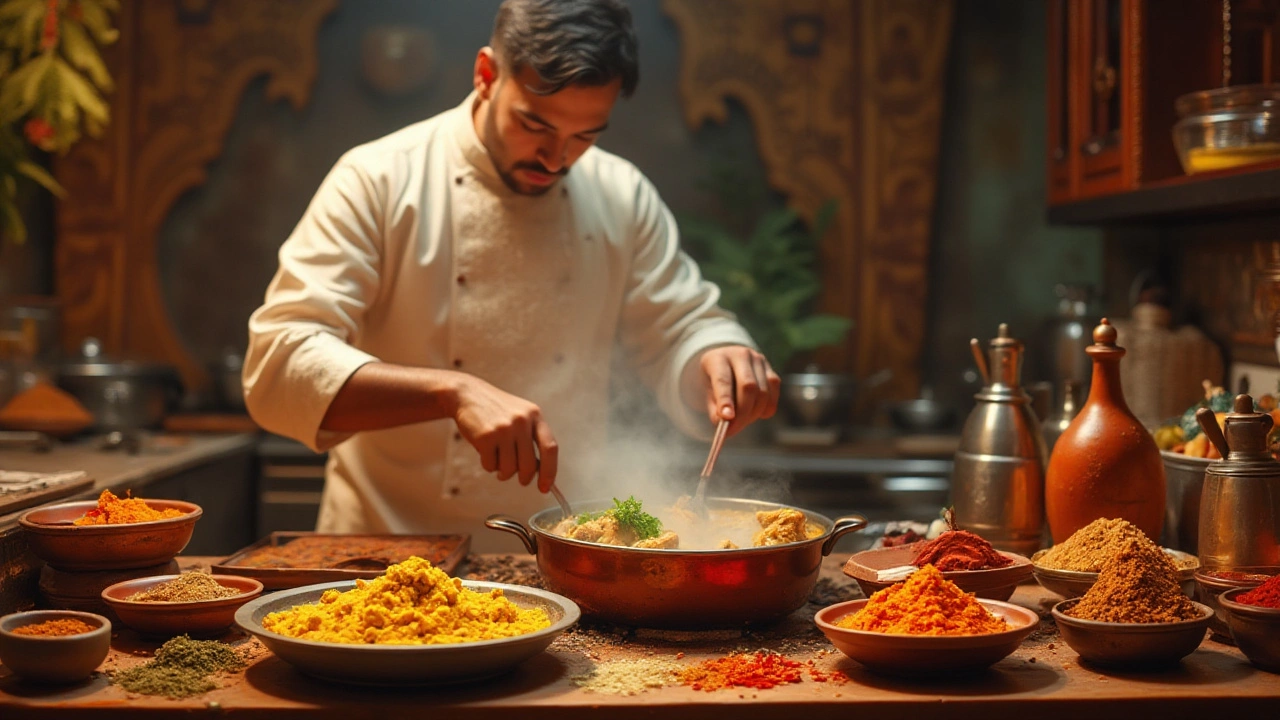Curry Recipes: Your Guide to Flavorful Indian Dishes
When working with curry recipes, a collection of dishes that blend spices, herbs, and often a sauce base to create rich, aromatic meals. Also known as Indian curries, they vary from dry masalas to soupy gravies and are a staple across the subcontinent. The heart of any curry ingredients, spices like cumin, coriander, garam masala, plus aromatics such as ginger, garlic, and onion drives flavor, while creamy curry, a style that uses yogurt, cream, coconut milk, or ground nuts to achieve a silky texture satisfies the craving for indulgent smoothness. Below you’ll see how these pieces fit together and why they matter for every home cook.
Core Components That Make a Curry Sing
Every good curry starts with a base of sautéed onions, ginger, and garlic. This trio creates the aromatic foundation that unlocks deeper flavors from the spices you add later. Next comes the spice blend – the classic “masala.” Common components include cumin seeds, coriander powder, turmeric for color, chili powder for heat, and fenugreek for a subtle bitterness. Turmeric isn’t the only way to get that golden hue; you can swap in saffron or annatto when you want a different shade or are avoiding turmeric. The choice of oil or ghee also shapes the final taste: ghee adds a nutty richness, while mustard oil brings a pungent punch typical of Bengal-style curries.
If you’re after a velvety texture, the sauce element matters. Yogurt, heavy cream, coconut milk, or cashew paste each bring a distinct mouthfeel. Yogurt offers a light tang, perfect for North Indian butter curries. Coconut milk shines in South Indian dishes, giving a tropical sweetness that balances chilies. For vegans, blended silken tofu or oat cream work just as well. Adding a splash of lemon juice at the end brightens the flavor and prevents the sauce from feeling heavy – a tip many chefs swear by.
Protein choices affect both nutrition and flavor absorption. Paneer, tofu, chicken, or lentils each soak up the spice mix differently. Paneer holds its shape and adds a milky richness, while tofu soaks up every nuance of the masala, making it a favorite for plant‑based eaters. Lentils – or dal – provide a hearty, protein‑packed base and can double as the main star in a curry, especially when cooked until soft and then blended into the sauce.
Regional variations are the spice of life in Indian cuisine. In the North, cream‑laden butter chicken and rich kormas dominate, often featuring nut pastes and a sweeter profile. Down South, the heat ramps up with mustard seeds, curry leaves, and tamarind for sour notes. The West uses coconut and kokum for tang, while the East leans on mustard oil and poppy seeds. Understanding these regional signatures helps you customize recipes without losing authenticity.
One common debate is whether tomatoes belong in a curry. Tomatoes bring acidity and a subtle sweetness that can balance heavy spices, especially in South Indian gravies. However, some purists argue that a true Punjabi curry relies on dairy and butter rather than tomatoes. The truth lies in personal taste – experiment with a spoonful of tomato puree and see if it lifts the flavor or overwhelms the spice balance.
Cooking technique plays a big role, too. Toasting whole spices before grinding releases essential oils, making the curry more fragrant. Deglazing the pan with a bit of water or stock after sautéing spices prevents them from burning and creates a smoother sauce. Finally, let the curry simmer low and slow; this allows the flavors to meld and the sauce to thicken naturally, avoiding a watery finish.
Whether you’re a beginner learning the basics or a seasoned cook tweaking a classic, mastering these elements will boost your confidence in the kitchen. In the sections below you’ll find practical guides on everything from choosing the right turmeric substitute to perfecting a creamy texture, plus troubleshooting tips for common pitfalls like lumpy sauces or bland spices. Ready to dive into the world of curry recipes and discover the full range of flavor possibilities? Keep reading – the next posts will walk you through each step, give you real‑world examples, and help you create dishes that taste like they came from a street‑side stall or a family kitchen alike.

Delicious Chicken Curry Variations: Discover 7 Essential Recipes
Chicken curry is a beloved dish enjoyed worldwide, with each culture offering its own unique twist. This article explores seven distinct types of chicken curry, delving into their origins, flavors, and preparation methods. Whether you're a seasoned chef or a home cook, these recipes will broaden your culinary horizons. From creamy and mild to spicy and intense, discover the world of chicken curry through these varied and delicious recipes. Learn essential tips and techniques to perfect these curries in your own kitchen.